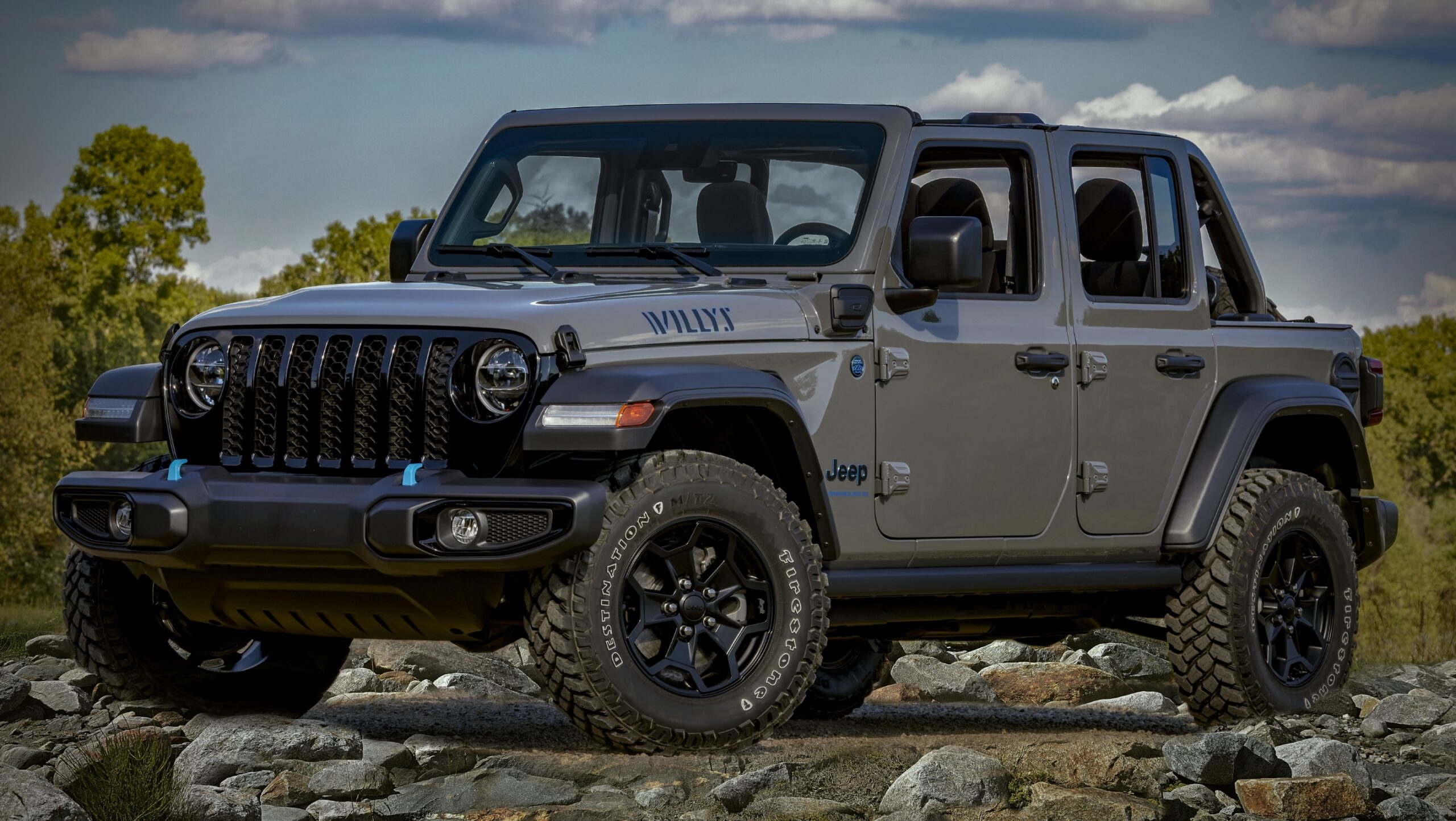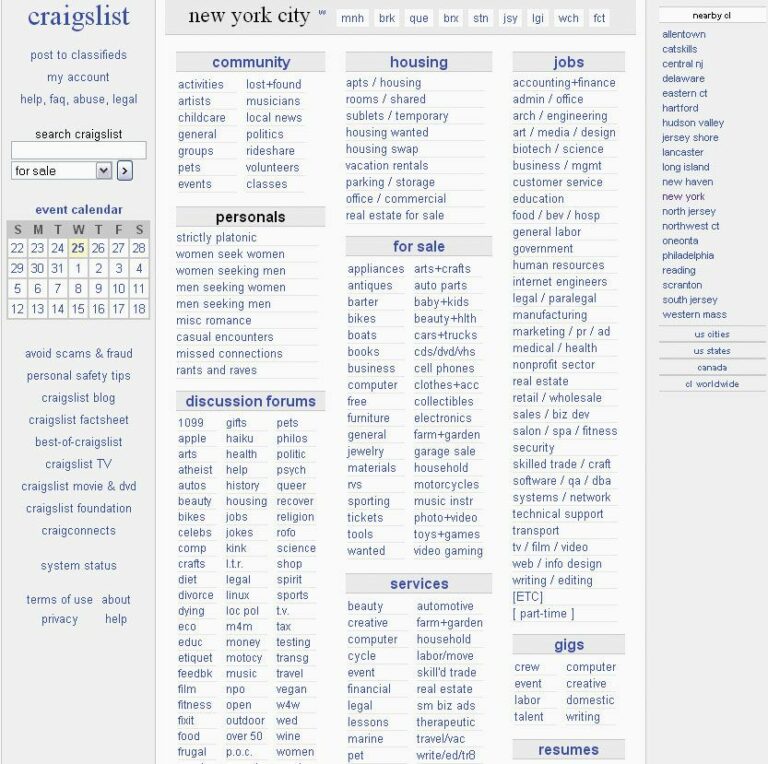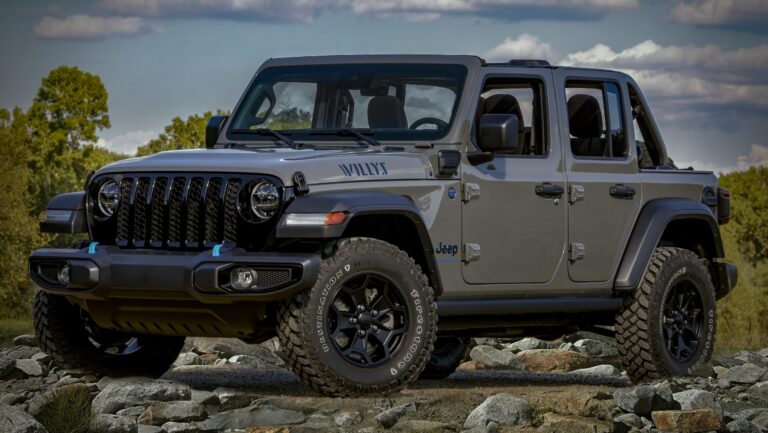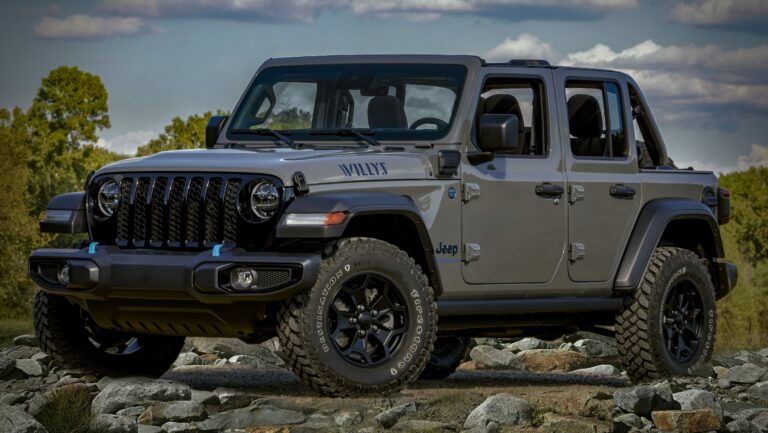Jeep Stroker For Sale: Unleashing the True Potential of Your Off-Road Beast
Jeep Stroker For Sale: Unleashing the True Potential of Your Off-Road Beast jeeps.truckstrend.com
For enthusiasts of the iconic Jeep, the quest for more power is a never-ending journey. While the venerable 4.0-liter inline-six engine is legendary for its reliability and torque, some drivers crave an extra punch, especially when tackling challenging trails or hauling heavy loads. This desire often leads them to the world of the "Jeep Stroker."
But what exactly is a Jeep Stroker, and why is "Jeep Stroker For Sale" a phrase that ignites excitement in the off-road community? Simply put, a stroker engine is a modified version of the stock 4.0L powerplant, meticulously engineered to increase its displacement and, consequently, its power and torque output. By using a crankshaft with a longer stroke, paired with specific connecting rods and pistons, builders transform the reliable but sometimes underpowered 4.0L into a formidable powerhouse. This article will serve as your comprehensive guide to understanding, finding, and confidently purchasing a Jeep Stroker, whether it’s a complete vehicle or a standalone engine.
Jeep Stroker For Sale: Unleashing the True Potential of Your Off-Road Beast
What Exactly is a Jeep Stroker Engine?
At its core, a Jeep stroker engine is an upgraded version of the original 4.0L (242 cubic inch) inline-six, found in countless Cherokees (XJ), Wranglers (TJ, YJ), Grand Cherokees (ZJ), and Comanches (MJ). The modification process involves increasing the engine’s internal displacement, allowing it to ingest and combust more air and fuel per cycle.
The magic happens by combining components from different AMC/Jeep engines:
- Crankshaft: Typically, a crankshaft from an older 4.2L (258 cubic inch) inline-six engine (found in older CJs, YJs, and full-size Jeeps) is used. This crankshaft has a longer stroke than the 4.0L’s.
- Connecting Rods: Specific connecting rods are chosen or custom-made to accommodate the longer stroke and maintain proper piston height within the cylinder.
- Pistons: Custom-designed or specific off-the-shelf pistons are used to match the new rod length and stroke, ensuring optimal compression ratio and piston-to-valve clearance.

When these components are carefully balanced and assembled, the result is a larger displacement engine, commonly ranging from 4.6 liters (280 ci) to 5.0 liters (305 ci). The most popular and well-balanced configurations are often the 4.6L and 4.7L, offering a significant boost in power without overly stressing other components. This meticulous internal modification is what differentiates a "stroker" from a simple bolt-on upgrade, delivering a substantial and tangible increase in the engine’s fundamental capabilities.
The Allure of More Power: Benefits of a Stroker Jeep
The primary reason anyone considers a "Jeep Stroker For Sale" is the promise of vastly improved performance. But the benefits extend far beyond just bragging rights:
- Significant Power & Torque Gains: A properly built stroker can easily push horsepower figures from the stock 190 HP to 250-300+ HP, and torque from around 220 lb-ft to 300-350+ lb-ft. This translates into a night-and-day difference in how the Jeep feels and performs.
- Superior Off-Road Performance: Low-end torque is king in off-roading. A stroker delivers immense grunt right off idle, making it easier to crawl over obstacles, climb steep ascents, and maintain momentum without excessive throttle input. This reduces stress on the drivetrain and improves control.
- Enhanced On-Road Drivability: Merging onto highways, passing slower traffic, or simply maintaining speed on inclines becomes effortless. For Jeeps equipped with larger tires, a stroker compensates for the added rotational mass, restoring or even surpassing original performance levels.
- Improved Towing Capability: If you use your Jeep for towing trailers, campers, or other vehicles, the added torque of a stroker drastically improves towing performance, reducing strain on the engine and transmission.
- Retained Reliability (with proper build): One of the greatest advantages is that a stroker retains the inherent robust design of the 4.0L block. When built by experienced professionals using quality components, a stroker can be as reliable, if not more so, than a stock engine, offering longevity alongside performance.
- Unique and Coveted: A stroker-equipped Jeep stands out. It’s a testament to a commitment to performance and a deeper understanding of the platform’s potential, often increasing its desirability among enthusiasts.
Finding Your Perfect Powerhouse: Where to Look for a Jeep Stroker For Sale
Searching for a "Jeep Stroker For Sale" requires a targeted approach, as these are specialized vehicles or components not typically found on every dealership lot.
- Dedicated Jeep Forums & Online Communities: Websites like JeepForum.com, NAXJA.org (North American XJ Association), CherokeeForum.com, and various Wrangler-specific forums are goldmines. Many members build and sell their stroker engines or entire stroker-equipped Jeeps. These platforms often provide detailed build threads and seller reputations.
- Specialized Performance Shops & Engine Builders: Several reputable shops across the country specialize in building and selling Jeep stroker engines. These offer professionally built, dyno-tested units, often with warranties. While more expensive, they provide peace of mind regarding quality and expertise.
- Online Marketplaces: Facebook Marketplace, Craigslist, and eBay Motors can list stroker-equipped Jeeps or standalone engines. Exercise caution here; verify sellers and request extensive documentation.
- Local Off-Road Clubs: Networking with local off-road clubs can yield leads. Members often know who is selling, or they might be selling their own vehicles.
- Word of Mouth: Sometimes, the best deals come through connections within the enthusiast community.
When searching, distinguish between a complete Jeep with a stroker engine already installed and a standalone stroker crate engine. The former offers a turnkey solution, while the latter requires an engine swap.
Crucial Considerations Before Buying a Stroker Jeep
Purchasing a modified vehicle, especially one with a significant engine upgrade like a stroker, demands thorough due diligence. Don’t rush into a purchase without considering these critical factors:
- Build Quality & Documentation: This is paramount. Who built the engine? Was it a reputable shop, a skilled individual, or an amateur? Request receipts for parts, dyno sheets (if available), and any build logs. A well-documented build indicates transparency and care.
- Maintenance History: A modified engine works harder. Comprehensive maintenance records for the engine and the entire vehicle are essential. Look for regular oil changes, cooling system flushes, and attention to detail.
- Supporting Modifications: A stroker engine generates significantly more power and heat. Ensure the rest of the Jeep’s systems have been upgraded accordingly:
- Cooling System: An upgraded radiator (3-row, all-aluminum), heavy-duty water pump, thermostat, and fan clutch are crucial to prevent overheating.
- Fuel System: Larger fuel injectors and potentially a higher-flow fuel pump might be necessary to feed the larger engine.
- Exhaust System: A less restrictive exhaust, including a larger diameter downpipe and cat-back, allows the engine to breathe better.
- Drivetrain: The stock transmission (AW4 automatic or AX-15 manual) can generally handle the power, but upgraded U-joints, stronger driveshafts, and potentially beefier axles might be necessary for aggressive off-roading.
- ECU Tuning: The engine control unit (ECU) often needs to be reprogrammed or tuned to optimize fuel delivery and timing for the increased displacement.
- Intended Use: How do you plan to use the Jeep? A daily driver needs different considerations than a dedicated rock crawler. Ensure the build aligns with your needs.
- Emissions Compliance: This is a major hurdle in some states (e.g., California). Stroker engines, especially older ones, may not pass stringent emissions tests. Research your local laws before buying.
- Budget Beyond Purchase Price: Factor in potential future maintenance, additional upgrades you might want, and the cost of any unexpected repairs. Modified vehicles can sometimes be more expensive to maintain.
- Pre-Purchase Inspection (PPI): Always, always get a pre-purchase inspection from a trusted mechanic, ideally one familiar with modified Jeeps and stroker engines. This can uncover hidden issues and save you from costly surprises.
Tips for a Successful Purchase
Navigating the market for a "Jeep Stroker For Sale" can be exciting. Follow these tips to ensure a smooth and satisfying transaction:
- Ask Detailed Questions: Don’t be shy. Inquire about every aspect of the build: engine components used, mileage on the stroker, break-in procedure, specific tuning, and any issues encountered.
- Request Visuals and Videos: Ask for high-resolution photos and videos of the engine running, cold starts, and the Jeep driving (if applicable). Pay attention to any unusual noises, smoke, or leaks.
- Verify the Build: If possible, try to verify the components used. Cross-reference part numbers or ask the seller to provide proof of purchase for major components.
- Negotiate Wisely: Stroker Jeeps are niche items, and pricing can be subjective. Use your research and inspection findings to negotiate a fair price.
- Be Patient: The right stroker Jeep might not appear overnight. Being patient will allow you to find a well-built, well-maintained example that fits your needs and budget.
Potential Challenges and Solutions
While a stroker engine offers significant benefits, it’s important to be aware of potential challenges and how to address them:
- Overheating:
- Challenge: Increased power generates more heat. Stock cooling systems may struggle.
- Solution: Mandatory upgrade to an all-aluminum, high-capacity radiator, heavy-duty water pump, new fan clutch, and regular cooling system maintenance. Consider an auxiliary electric fan.
- Fueling Issues:
- Challenge: The larger displacement engine demands more fuel. Stock injectors and pump might be insufficient, leading to lean conditions.
- Solution: Upgrade to higher-flow fuel injectors (e.g., 24lb/hr or larger) and potentially a higher-volume fuel pump. Ensure proper ECU tuning to match.
- Drivetrain Stress:
- Challenge: The increased torque can put more stress on the transmission, transfer case, driveshafts, and axles, especially during aggressive off-roading.
- Solution: For dedicated off-roaders, consider upgrading U-joints, driveshafts (CV style), and potentially stronger axle shafts or entire axle assemblies (e.g., Ford 8.8, Dana 44).
- Emissions Compliance:
- Challenge: Stroker engines often struggle to meet modern emissions standards, particularly in states with strict testing.
- Solution: Research local laws thoroughly. For older Jeeps (pre-OBDII), it might be easier. For newer ones, careful tuning and catalytic converter selection are crucial. Some regions may have exemptions for older vehicles.
- Cost:
- Challenge: Stroker builds are not cheap, and buying one already built can be a significant investment.
- Solution: Prioritize your budget. Decide if a professionally built engine or a DIY kit is more suitable. Remember that the initial purchase is often just the beginning; factor in future maintenance and upgrades.
Price Table: Understanding the Investment in a Jeep Stroker
The cost of a "Jeep Stroker For Sale" varies widely based on whether you’re buying a complete vehicle, a crate engine, the quality of components, and who performed the build. The following table provides estimated price ranges.
| Item | Description | Estimated Price Range (USD) | Notes |
| :—————————— | :————————————————————————————- | :————————— | :———————————————————————————————————————————————————————————————————————————————————————————————————————————————————————————————————————————————————————————————————————————————————————————————————————————————————————————————————————————————————————————————————————————————————————————————————————————————————————————————————————————————————————————————————————————————————————————————————————————————————————————————————————————————————————————————————————————————————————————————————————————————————————————————————————————————————————————————————————————————————————————————————————————————————————————————————————————————————————————————————————————————————————————————————————————————————————————————————————————————————————————————————————————————————————————————————————————————————————————————————————————————————————————————————————————————————————————————————————————————————————————————————————————————————————————————————————————————————————————————————————————————————————————————————————————————————————————————————————————————————————————————————————————————————————————————————————————————————————————————————————————————————————————————————————————————————————————————————————————————————————————————————————————————————————————————————————————————————————————————————————————————————————————————————————————————————————————————————————————————————————————————————————————————————————————————————————————————————————————————————————————————————————————————————————————————————————————————————————————————————————————————————————————————————————————————————————————————————————————————————————————————————————————————————————————————————————————————————————————————————————————————————————————————————————————————————————————————————————————————————————————————————————————————————————————————————————————————————————————————————————————————————————————————————————————————————————————————————————————————————————————————————————————————————————————————————————————————————————————————————————————————————————————————————————————————————————————————————————————————————————————————————————————————————————————————————————————————————————————————————————————————————————————————————————————————————————————————————————————————————————————————————————————————————————————————————————————————————————————————————————————————————————————————————————————————————————————————————————————————————————————————————————————————————————————————————————————————————————————————————————————————————————————————————————————————————————————————————————————————————————————————————————————————————————————————————————————————————————————————————————————————————————————————————————————————————————————————————————————————————————————————————————————————————————————————————————————————————————————————————————————————————————————————————————————————————————————————————————————————————————————————————————————————————————————————————————————————————————————————————————————————————————————————————————————————————————————————————————————————————————————————————————————————————————————————————————————————————————————————————————————————————————————————————————————————————————————————————————————————————————————————————————————————————————————————————————————————————————————————————————————————————————————————————————————————————————————————————————————————————————————————————————————————————————————————————————————————————————————————————————————————————————————————————————————————————————————————————————————————————————————————————————————————————————————————————————————————————————————————————————————————————————————————————————————————————————————————————————————————————————————————————————————————————————————————————————————————————————————————————————————————————————————————————————————————————————————————————————————————————————————————————————————————————————————————————————————————————————————————————————————————————————————————————————————————————————————————————————————————————————————————————————————————————————————————————————————————————————————————————————————————————————————————————————————————————————————————————————————————————————————————————————————————————————————————————————————————————————————————————————————————————————————————————————————————————————————————————————————————————————————————————————————————————————————————————————————————————————————————————————————————————————————————————————————————————————————————————————————————————————————————————————————————————————————————————————————————————————————————————————————————————————————————————————————————————————————————————————————————————————————————————————————————————————————————————————————————————————————————————————————————————————————————————————————————————————————————————————————————————————————————————————————————————————————————————————————————————————————————————————————————————————————————————————————————————————————————————————————————————————————————————————————————————————————————————————————————————————————————————————————————————————————————————————————————————————————————————————————————————————————————————————————————————————————————————————————————————————————————————————————————————————————————————————————————————————————————————————————————————————————————————————————————————————————————————————————————————————————————————————————————————————————————————————————————————————————————————————————————————————————————————————————————————————————————————————————————————————————————————————————————————————————————————————————————————————————————————————————————————————————————————————————————————————————————————————————————————————————————————————————————————————————————————————————————————————————————————————————————————————————————————————————————————————————————————————————————————————————————————————————————————————————————————————————————————————————————————————————————————————————————————————————————————————————————————————————————————————————————————————————————————————————————————————————————————————————————————————————————————————————————————————————————————————————————————————————————————————————————————————————————————————————————————————————————————————————————————————————————————————————————————————————————————————————————————————————————————————————————————————————————————————————————————————————————————————————————————————————————————————————————————————————————————————————————————————————————————————————————————————————————————————————————————————————————————————————————————————————————————————————————————————————————————————————————————————————————————————————————————————————————————————————————————————————————————————————————————————————————————————————————————————————————————————————————————————————————————————————————————————————————————————————————————————————————————————————————————————————————————————————————————————————————————————————————————————————————————————————————————————————————————————————————————————————————————————————————————————————————————————————————————————————————————————————————————————————————————————————————————————————————————————————————————————————————————————————————————————————————————————————————————————————————————————————————————————————————————————————————————————————————————————————————————————————————————————————————————————————————————————————————————————————————————————————————————————————————————————————————————————————————————————————————————————————————————————————————————————————————————————————————————————————————————————————————————————————————————————————————————————————————————————————————————————————————————————————————————————————————————————————————————————————————————————————————————————————————————————————————————————————————————————————————————————————————————————————————————————————————————————————————————————————————————————————————————————————————————————————————————————————————————————————————————————————————————————————————————————————————————————————————————————————————————————————————————————————————————————————————————————————————————————————————————————————————————————————————————————————————————————————————————————————————————————————————————————————————————————————————————————————————————————————————————————————————————————————————————————————————————————————————————————————————————————————————————————————————————————————————————————————————————————————————————————————————————————————————————————————————————————————————————————————————————————————————————————————————————————————————————————————————————————————————————————————————————————————————————————————————————————————————————————————————————————————————————————————————————————————————————————————————————————————————————————————————————————————————————————————————————————————————————————————————————————————————————————————————————————————————————————————————————————————————————————————————————————————————————————————————————————————————————————————————————————————————————————————————————————————————————————————————————————————————————————————————————————————————————————————————————————————————————————————————————————————————————————————————————————————————————————————————————————————————————————————————————————————————————————————————————————————————————————————————————————————————————————————————————————————————————————————————————————————————————————————————————————————————————————————————————————————————————————————————————————————————————————————————————————————————————————————————————————————————————————————————————————————————————————————————————————————————————————————————————————————————————————————————————————————————————————————————————————————————————————————————————————————————————————————————————————————————————————————————————————————————————————————————————————————————————————————————————————————————————————————————————————————————————————————————————————————————————————————————————————————————————————————————————————————————————————————————————————————————————————————————————————————————————————————————————————————————————————————————————————————————————————————————————————————————————————————————————————————————————————————————————————————————————————————————————————————————————————————————————————————————————————————————————————————————————————————————————————————————————————————————————————————————————————————————————————————————————————————————————————————————————————————————————————————————————————————————————————————————————————————————————————————————————————————————————————————————————————————————————————————————————————————————————————————————————————————————————————————————————————————————————————————————————————————————————————————————————————————————————————————————————————————————————————————————————————————————————————————————————————————————————————————————————————————————————————————————————————————————————————————————————————————————————————————————————————————————————————————————————————————————————————————————————————————————————————————————————————————————————————————————————————————————————————————————————————————————————————————————————————————————————————————————————————————————————————————————————————————————————————————————————————————————————————————————————————————————————————————————————————————————————————————————————————————————————————————————————————————————————————————————————————————————————————————————————————————————————————————————————————————————————————————————————————————————————————————————————————————————————————————————————————————————————————————————————————————————————————————————————————————————————————————————————————————————————————————————————————————————————————————————————————————————————————————————————————————————————————————————————————————————————————————————————————————————————————————————————————————————————————————————————————————————————————————————————————————————————————————————————————————————————————————————————————————————————————————————————————————————————————————————————————————————————————————————————————————————————————————————————————————————————————————————————————————————————————————————————————————————————————————————————————————————————————————————————————————————————————————————————————————————————————————————————————————————————————————————————————————————————————————————————————————————————————————————————————————————————————————————————————————————————————————————————————————————————————————————————————————————————————————————————————————————————————————————————————————————————————————————————————————————————————————————————————————————————————————————————————————————————————————————————————————————————————————————————————————————————————————————————————————————————————————————————————————————————————————————————————————————————————————————— Understanding the "Jeep Stroker For Sale" Market: An In-Depth Guide
The allure of a modified Jeep is undeniable, and among the most sought-after upgrades is the "stroker" engine. For enthusiasts looking to significantly boost the power and torque of their beloved 4.0L inline-six, a stroker is often the ultimate solution. This comprehensive guide delves into what a Jeep stroker is, its benefits, where to find one, critical considerations before purchasing, and what to expect in terms of performance and cost, helping you confidently navigate the "Jeep Stroker For Sale" market.
1. Introduction: Defining the Jeep Stroker Phenomenon
The phrase "Jeep Stroker For Sale" resonates deeply within the off-road and performance communities. It refers to a highly modified version of Jeep’s ubiquitous 4.0-liter (242 cubic inch) inline-six engine, which has powered countless Wranglers (YJ, TJ, LJ), Cherokees (XJ), Grand Cherokees (ZJ), and Comanches (MJ) from the late 1980s through the early 2000s. While lauded for its legendary reliability, simplicity, and low-end torque, the stock 4.0L can feel somewhat underpowered, especially when faced with larger tires, heavy armor, or steep inclines.
A "stroker" engine addresses this by increasing the engine’s displacement beyond its factory specification. This is primarily achieved by combining components from different AMC/Jeep engines, specifically utilizing a crankshaft with a longer "stroke" (the distance the piston travels up and down in the cylinder) from an older 4.2L (258 cubic inch) engine, along with custom-matched connecting rods and pistons. The result is a larger displacement engine, typically ranging from 4.6L to 5.0L, which translates directly into a substantial increase in horsepower and, more importantly for a Jeep, torque. For many, a stroker transforms a capable off-roader into an unstoppable force, making "Jeep Stroker For Sale" a highly relevant and exciting search for those seeking unparalleled performance from their classic Jeep platform.
2. The Mechanics Behind the Power: What Makes a Stroker a Stroker?
Understanding the technical aspects of a Jeep stroker is crucial for appreciating its value and assessing potential purchases. The core principle is to increase the engine’s swept volume – the amount of air and fuel it can draw in and combust per revolution.
The standard 4.0L engine has a bore (cylinder diameter) of 3.875 inches and a stroke of 3.41 inches. To create a stroker, builders typically perform the following modifications:
- Crankshaft Swap: The key component is the crankshaft from an AMC 4.2L (258ci) engine. This crank has a longer stroke of 3.895 inches. This immediately increases the potential displacement.
- Connecting Rods: Because the 4.2L crankshaft has a longer throw, the original 4.0L connecting rods would push the pistons too high in the cylinders. Builders compensate by using shorter connecting rods, often from a Ford 4.0L V6 engine (like those found in Explorers or Rangers), or custom-fabricated rods. These shorter rods ensure the piston’s top dead center (TDC) position is correct relative to the cylinder head.
- Pistons: To maintain the desired compression ratio and ensure proper piston-to-valve clearance with the new rod/crank combination, specific pistons are used. These are often custom-made or selected from a different application, designed to sit at the correct height in the bore and withstand the increased forces.
- Cylinder Boring (Optional but Common): While the stroke increases displacement significantly, many builders also opt to bore out the cylinders slightly, increasing the bore diameter. This further contributes to displacement gains. For instance, a common 4.7L stroker might combine the 4.2L crank, specific rods, and a 0.060-inch overbore on the 4.0L block.
The most common stroker displacements you’ll encounter when looking for "Jeep Stroker For Sale" include:
- 4.6 Liters (280 ci): A popular entry-level stroker, offering a good balance of power and reliability.
- 4.7 Liters (287 ci): Arguably the most common and well-optimized stroker, offering substantial gains.
- 4.9 Liters (299 ci) / 5.0 Liters (305 ci): More aggressive builds, pushing the limits of the block and often requiring more extensive supporting modifications.
The beauty of the stroker concept lies in its ability to leverage the inherent robustness of the 4.0L block, transforming it into a much more potent engine while often retaining a familiar external appearance.
3. The Unmistakable Advantages: Why Buy a Stroker Jeep?
The decision to seek out a "Jeep Stroker For Sale" is driven by a desire for a vastly superior driving experience, both on and off the pavement. The benefits are numerous and compelling:
- Dramatic Power and Torque Increase: This is the primary draw. A well-built 4.7L stroker can produce upwards of 250-300 horsepower and an impressive 300-350+ lb-ft of torque. Compare this to the stock 4.0L’s 190 HP and 220 lb-ft, and the difference is monumental. This translates into effortless acceleration, improved highway merging, and superior passing power.
- Unrivaled Low-End Torque for Off-Roading: For serious off-road enthusiasts, torque is king. A stroker’s ability to generate immense torque at low RPMs makes rock crawling, steep hill climbs, and navigating technical terrain significantly easier. You’ll find yourself needing less throttle, reducing stress on the drivetrain, and gaining finer control over your vehicle.
- Compensating for Larger Tires and Gearing: Many Jeep owners upgrade to larger tires, which effectively raises the final drive ratio and robs the vehicle of power. A stroker engine effortlessly compensates for this, restoring and often exceeding the performance of a stock Jeep on factory tires. It reduces the need for extreme gear ratio changes, though re-gearing is still recommended for optimal performance with very large tires.
- Enhanced Towing Capacity: If your Jeep doubles as a tow vehicle, a stroker dramatically improves its capability. The added torque means less strain on the engine and transmission, making towing trailers, boats, or other vehicles a far more comfortable and safer experience.
- Retained Reliability and Familiarity: Unlike engine swaps to completely different platforms, a stroker retains the fundamental architecture of the 4.0L. When built correctly with quality components and proper tuning, a stroker can be just as reliable, if not more so, than a stock engine. Maintenance procedures remain largely familiar, and parts are generally available.
- Increased Resale Value and Desirability: A well-documented, professionally built stroker engine can significantly increase the appeal and resale value of a Jeep within the enthusiast market. It signals a serious commitment to performance and a unique, highly capable vehicle.
In essence, a stroker transforms the already capable Jeep into a true powerhouse, capable of tackling virtually any challenge with authority and confidence.
4. Navigating the Market: Where to Find a "Jeep Stroker For Sale"
Locating a "Jeep Stroker For Sale" requires a more specialized search than finding a stock vehicle. You’ll typically find them in a few key places:
- Online Forums and Enthusiast Communities: These are arguably the best places to start. Websites like JeepForum.com, NAXJA.org (North American XJ Association), CherokeeForum.com, and WranglerForum.com have dedicated "For Sale" sections. Sellers often provide detailed build logs, photos, and answer questions from an informed audience. You can also gain insight into a seller’s reputation through their post history.
- **




